Rating index:
Extraordinary (96-100)
Outstanding (93-95)
Very good to Excellent (89-92)
Above average to Good (86-88)
Below Average to Average (80-85)
Avoid (below 80)
More info >
Extraordinary (96-100)
Outstanding (93-95)
Very good to Excellent (89-92)
Above average to Good (86-88)
Below Average to Average (80-85)
Avoid (below 80)
More info >
What happens to stars awarded to a restaurant when Michelin discontinues a guide? Do they disappear immediately or they continue to hover over a restaurant like an illuminated drone? I guess a similar question could be asked about stars awarded in one-off special edition guides, like you see in Japan. Michelin no longer publishes a guide for Austria - the last edition of the Austrian guide was published in 2009. In this final edition Simon Taxacher's restaurant (then called Rosengarten) featured as a new holder of 2 Michelin stars. Austria's main cities Salzburg and Vienna are still featured in Michelin's Main Cities of Europe guide.
Restaurant Simon Taxacher is located in the village of Kirchberg, the eastern part of Tirol, near Kitzbühel, and is housed in the Relais & Châteaux property Rosengarten, a luxury hotel and spa with 26 rooms and suites, which opened in 2010.
Chef and owner Simon Taxacher (b.1976 in Kirchberg) attended the Villa Blanka Hotel School in Innsbruck and graduated in 1993. Taxacher then trained at a number of restaurants in Austria, Switzerland and Germany. In the late nineties he returned to his birth village to take over the family restaurant, which was relaunched as Rosengarten in 2000. The restaurant was awarded its first Michelin star in 2004 and a second star followed in the 2009 guide. In the same year the restaurant entered the Gault & Millau Austria guide with 17 (out of 20) points, moving up to 19 points in the 2014 edition. Simon Taxacher currently still has 19 points and four "toques" in the Gault & Millau guide (distinctions which he shares with only three other restaurants in Austria).
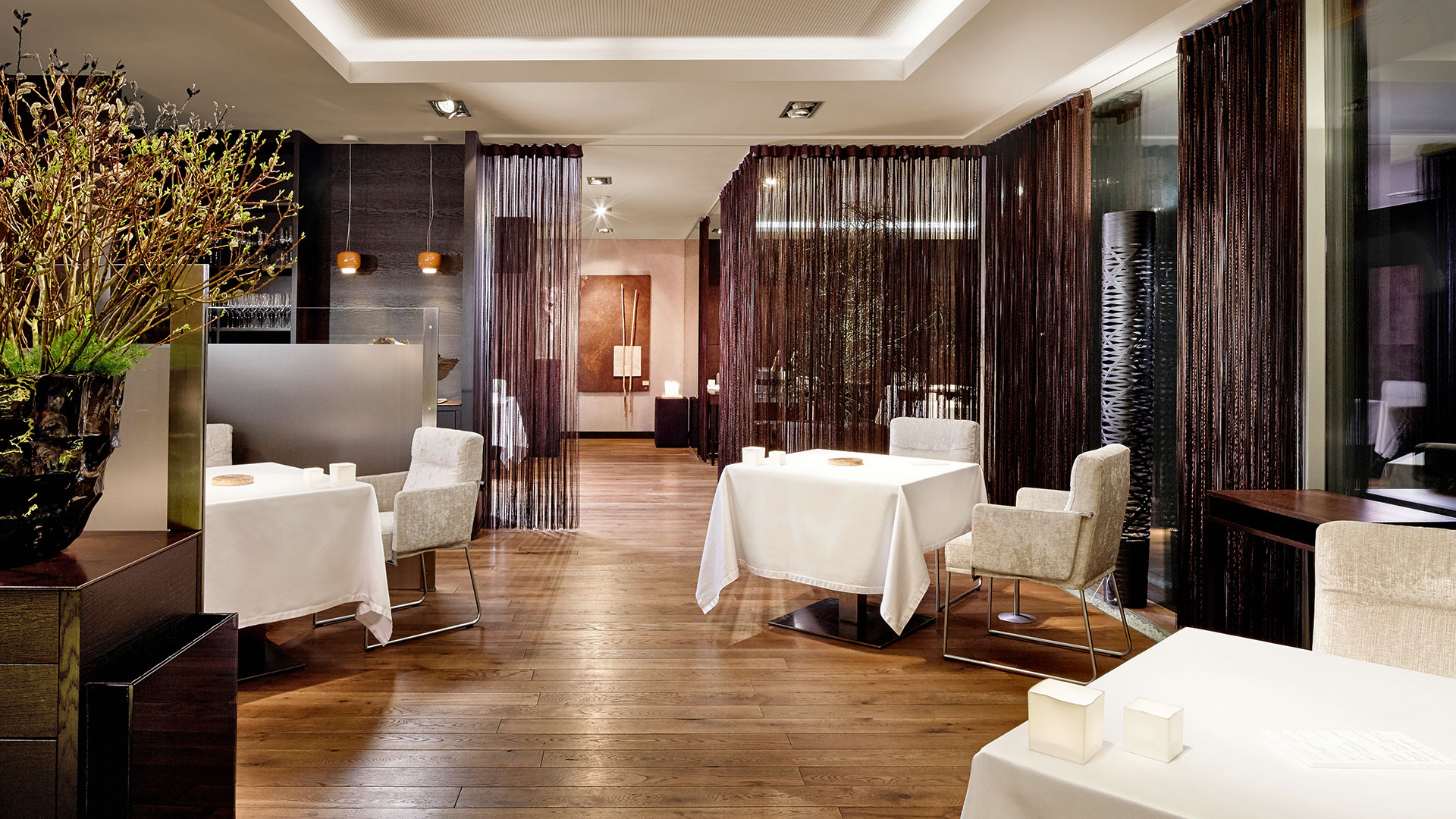
(courtesy of Simon Taxacher)
The restaurant is open for dinner Thursday through Monday and in the winter season the restaurant also serves lunch on Saturdays and Sundays. There's one tasting menu on offer (7 courses €165, 9 courses €205 and 11 courses €247). I had dinner with my husband at Simon Taxacher on Monday 14 September 2015 and we both had the 7 course tasting menu.
First to arrive was a saffron macaron with a delicious crab filling, that had been seasoned with a touch of yuzu. Served at the same time were some thin and crisp nigella seed and chive crackers and three amuse bouches. There was a hearty but refined lentil soup with Iberico bacon, vinegar foam and some freshly grated mountain cheese. This was followed by tender lamb stew wrapped in smoked "jungkraut" (a type of young cabbage) and served on some couscous, and by grilled catfish liver served with an orange pepper espuma, soft marinated red pepper and a piece of raw green pepper. A lovely start of this meal with original flavour combinations; I can't remember ever having eaten grilled catfish liver before.
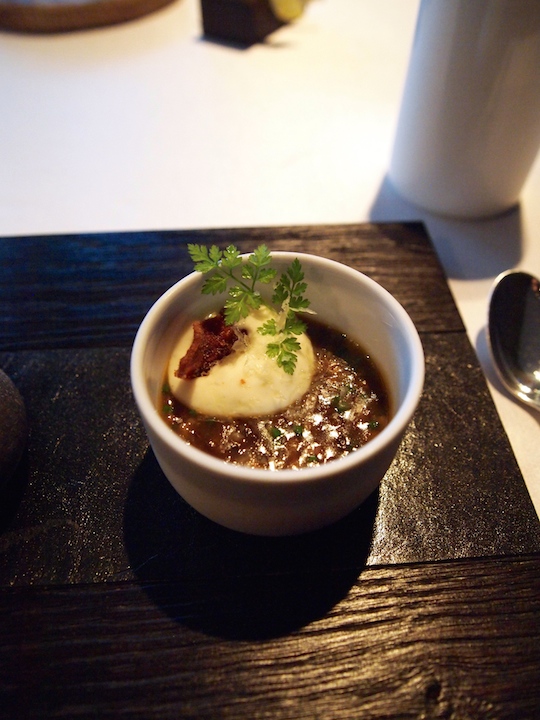


Next we were served a more sizable amuse bouche of dill-marinated trout, various forms of watermelon (semi-dried, grilled and puree/gel) and cucumber (grilled, jelly cubes and little rolls), complemented by a wonderfully fresh, sour cream and cucumber "smoothie". A delightful dish with energetic flavours and great textures. Lovely touch of herbiness and saltiness from the trout, which was excellently marinated.
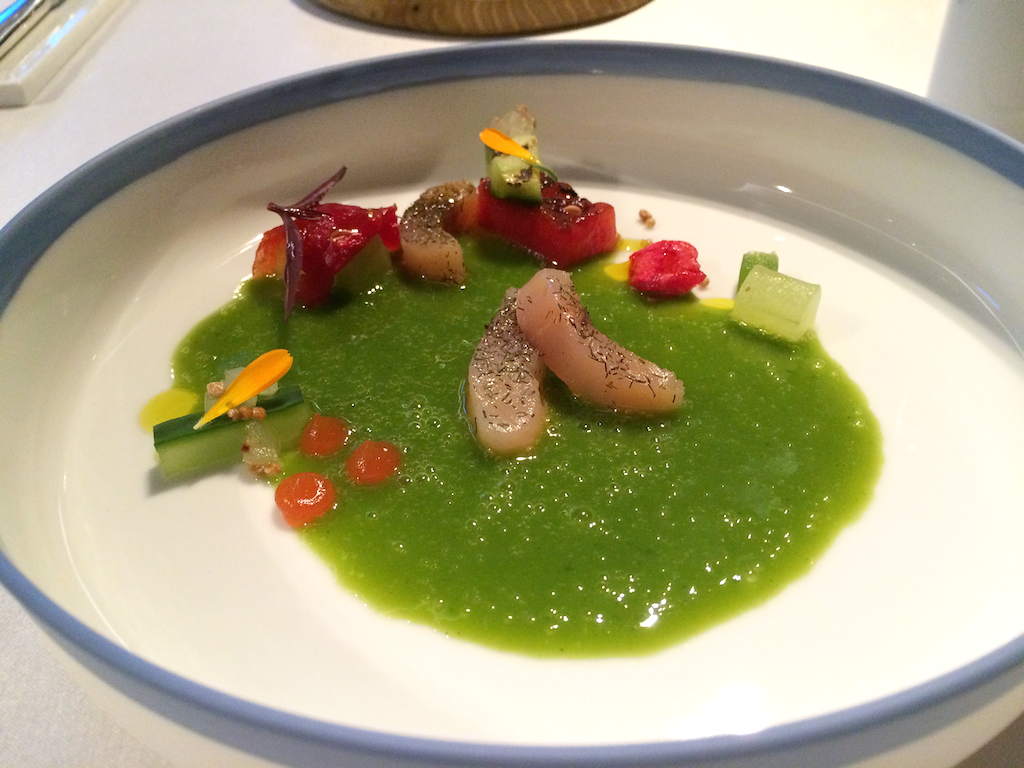

Bread made with fermented potatoes and very lightly flavoured with wild oregano.
The first course of the tasting menu was Bresse pigeon served with cherries, celery, mixed nuts, and pigeon jus. Beautifully cooked pigeon breast and an exquisite pigeon jus with terrific roasted bone flavours in the aftertaste. Lovely freshness from the the celery which was served in two ways, crunchy marinated ribbons and a mousse shaped into a stalk. The cherries came in various forms too: there were sweet preserved halved cherries, a fresh and elegantly sweet cherry gel and some mini cherry meringues for extra crunch. Also on the plate was a nut mousse (underneath the celery mousse), soft shallots filled with chopped fried pigeon liver, and a few slices of marinated pigeon, with a nice and tender, ham-like texture and a lovely hint of warm spiciness. There was a lot going on on the plate, with plentiful preparations, but nothing was overworked and the flavours went incredibly well together. The celery balanced the richness of the pigeon and of the nuts wonderfully and I loved the elegant sweet note of the cherries.

Second course were lightly steamed, juicy langoustines, served with spinach tapioca, fermented parsley root, pickled parsley root, spinach leaves, kalamansi gel, pecan crumble and frozen pecan mousse shaped into a pecan. A concentrated celery root stock was served on the side. A very textural dish with distinctive flavours and a good balance between lightness and intensity. Fermenting the parsley root had given it a deep and more complex flavour with a pleasant hint of salty tanginess in the background. The spinach flavours were mild and the pecan crumble added a nice nutty sweetness to the dish.
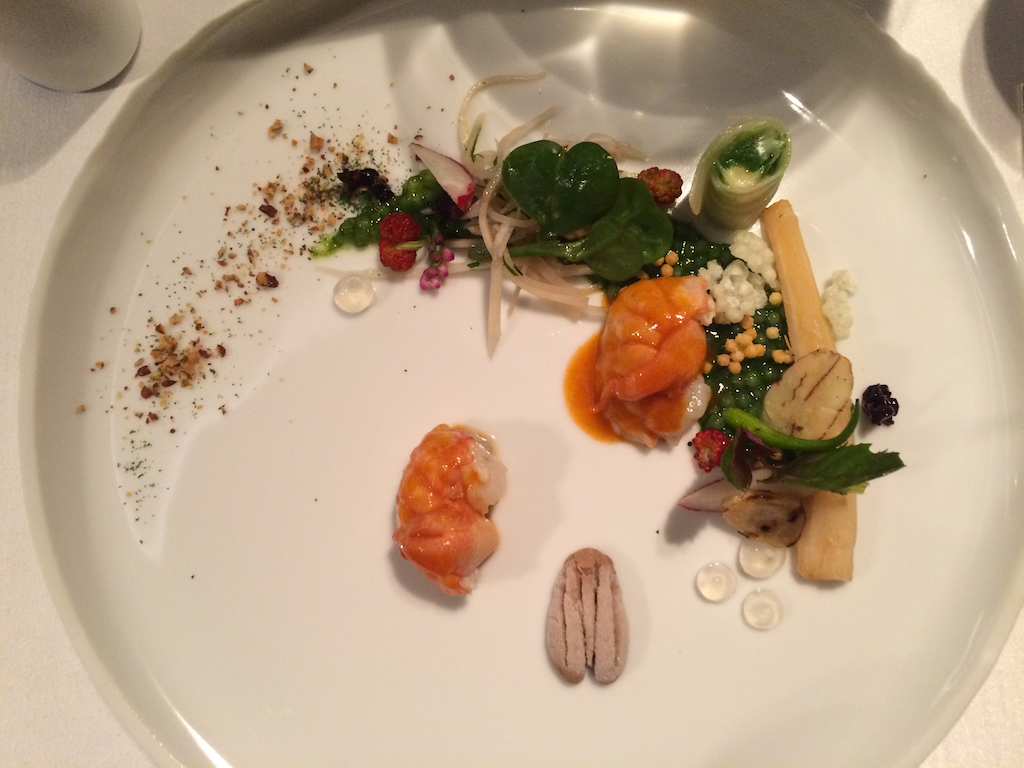
Next up were various preparations of heritage carrots, such as pickled, roasted, fermented, and a carrot roll filled with a fresh cheese espuma, accompanied by two mini veal sweetbread croquettes, a sweet malt sauce, carrot green puree, and crunchy toasted malt. Last but not least there was some freshly shaved Belper Knolle (a Swiss cow's milk cheese flavoured with black pepper and garlic), which gave the dish a nice and peppery finish. Lovely crisp crunch from the carrots, the sweet malt sauce complementing the natural sweetness of the carrots perfectly. An inspired and well-executed dish; adding the sweetbread croquettes was a clever touch, because it delivered an element of meaty comfort.

Less convincing was the fourth course, which came in two dishes. First up was seabass served with a mildly sweet hibiscus "soup" and some blood toast covered with smooth black pudding. Both the seabass and the black pudding were rich in flavour and quite nice on their own, but the dish was missing some acidity (or bitters) to cut through the richness. More balance was delivered in the second dish of turnip puree, "al dente" baby turnips, a sweet wild hibiscus flower crisp, some smooth black pudding puree and a black pudding crisp. Here the bitters of the turnip did help to cut through the richness of the black pudding.
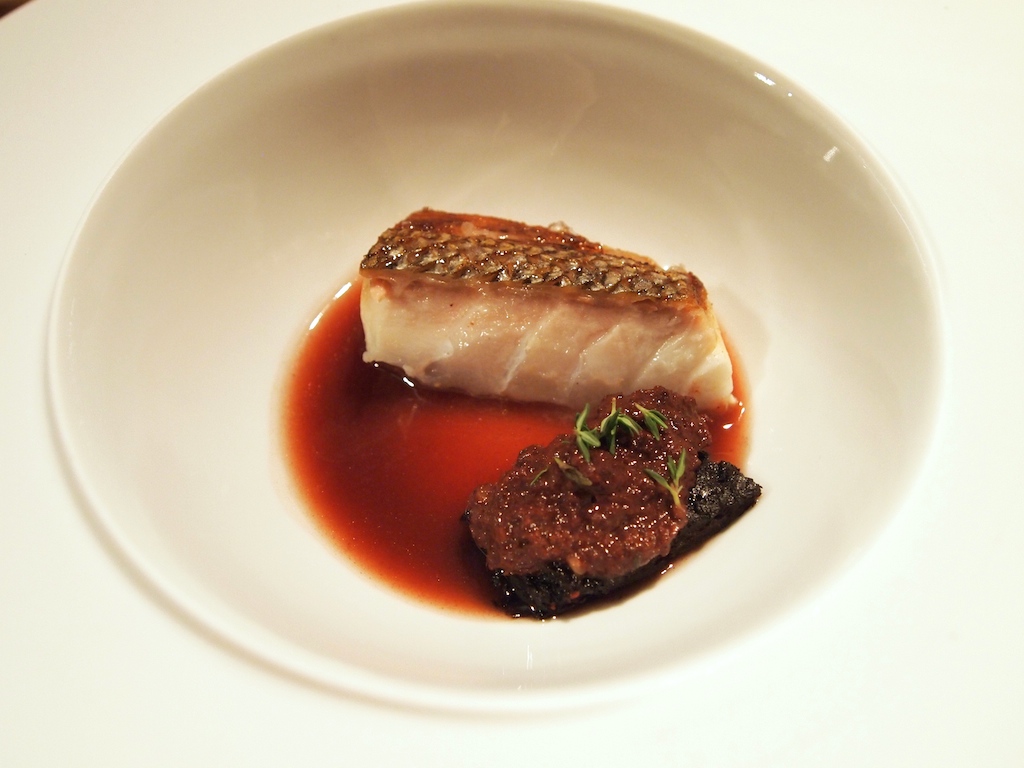
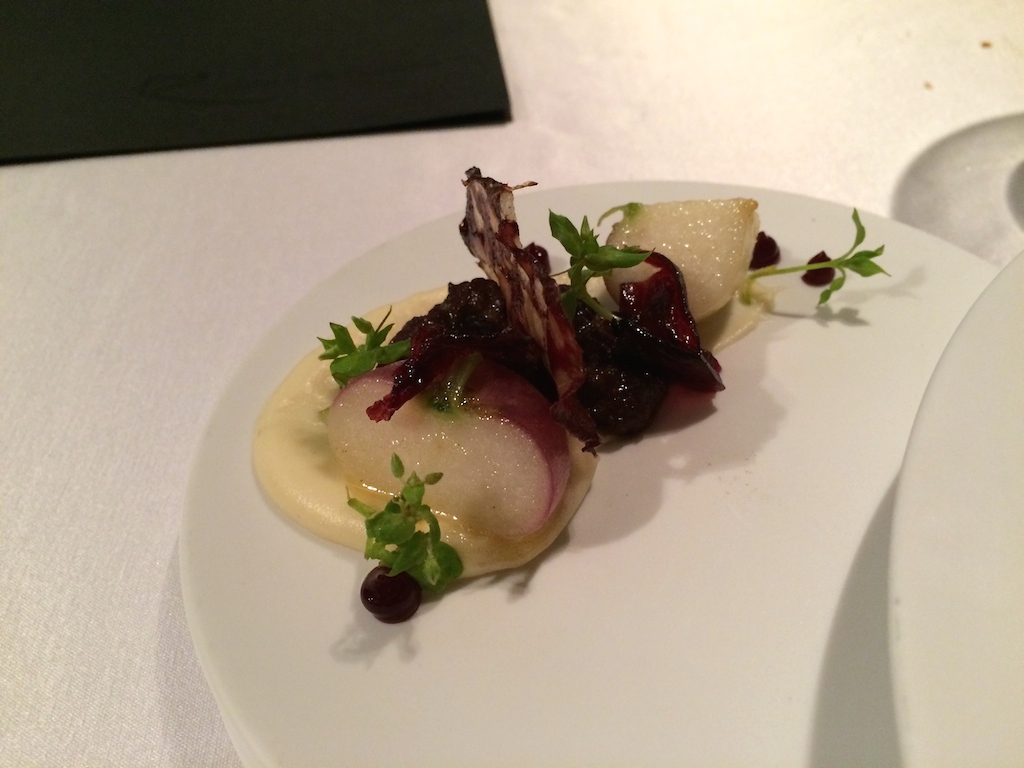
Fifth course was tenderly cooked "Gams" (Chamois or mountain goat), successfully paired with a slice of fermented and then barbecued (on the Big Green Egg) mangold root, marinated lingonberries, Swiss chard, an umami-rich black garlic puree, and Job's tears (puffed and cooked). A pleasing dish, covering all the basic tastes and with attractive textures, the Gams offset nicely by the black garlic.
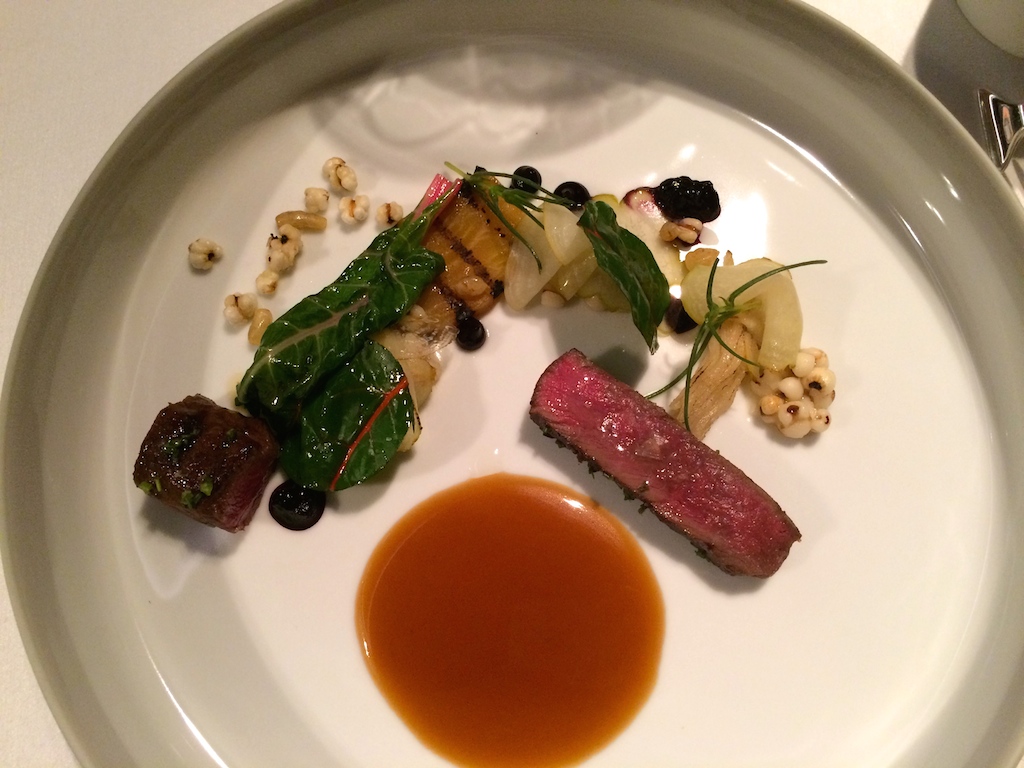
On the the cheese and desserts. The restaurant serves a lovely selection of (mainly French) cheeses supplied by famous cheese affineur Bernard Antony in Alsace, France.
Before dessert we were served a delicious "Krapfen", a traditional Tyrolean deep-fried dumpling, and this particular one was filled with local mountain cheese, and (as per the custom) served with a small cup of fresh buttermilk. This was followed by a pre-dessert of sorrel granita served with a chocolate "tree branch" filled with and intensely flavoured hay ice cream.
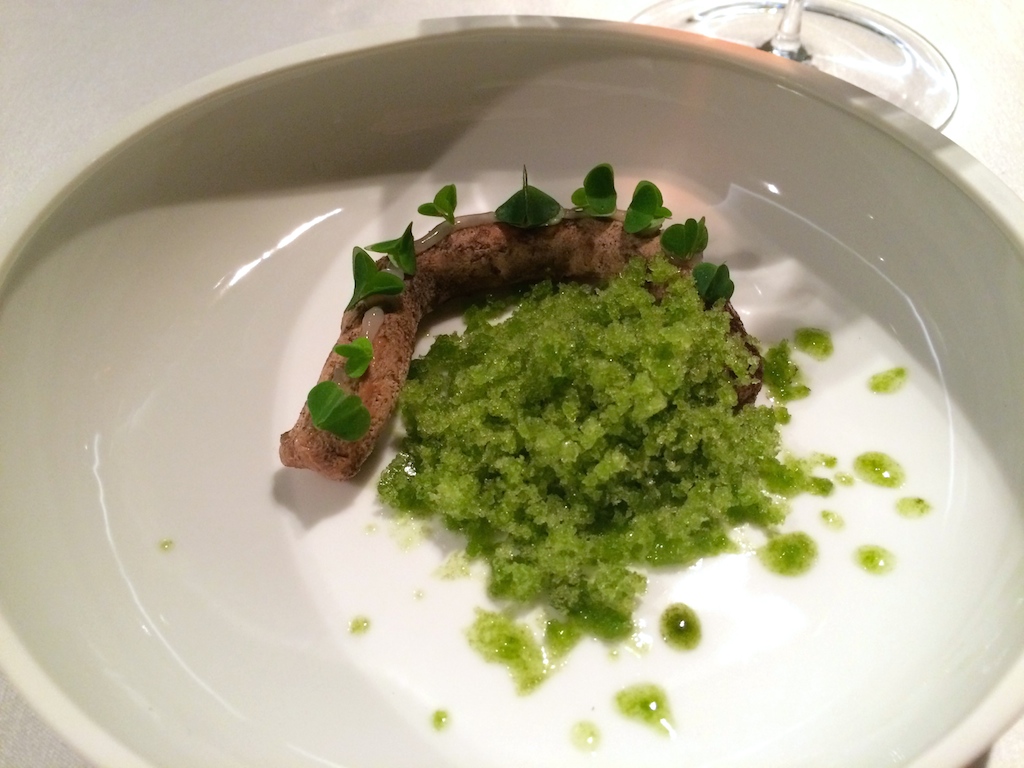
Dessert proper was a chocolate "truffle" coated with liquorice powder and filled with fir ice cream, iced fir/gooseberry pearls, a quite tart gooseberry sauce, liquorice sponge cake, and a liquorice paste. I have embraced savoury and/or non-sugar-bomb desserts, and this particular one certainly had interesting flavours and clearly a lot of work had been put into it. That said, I did feel this dessert was unbalanced, especially the fir ice cream, which had really powerful resinous/piney flavours.

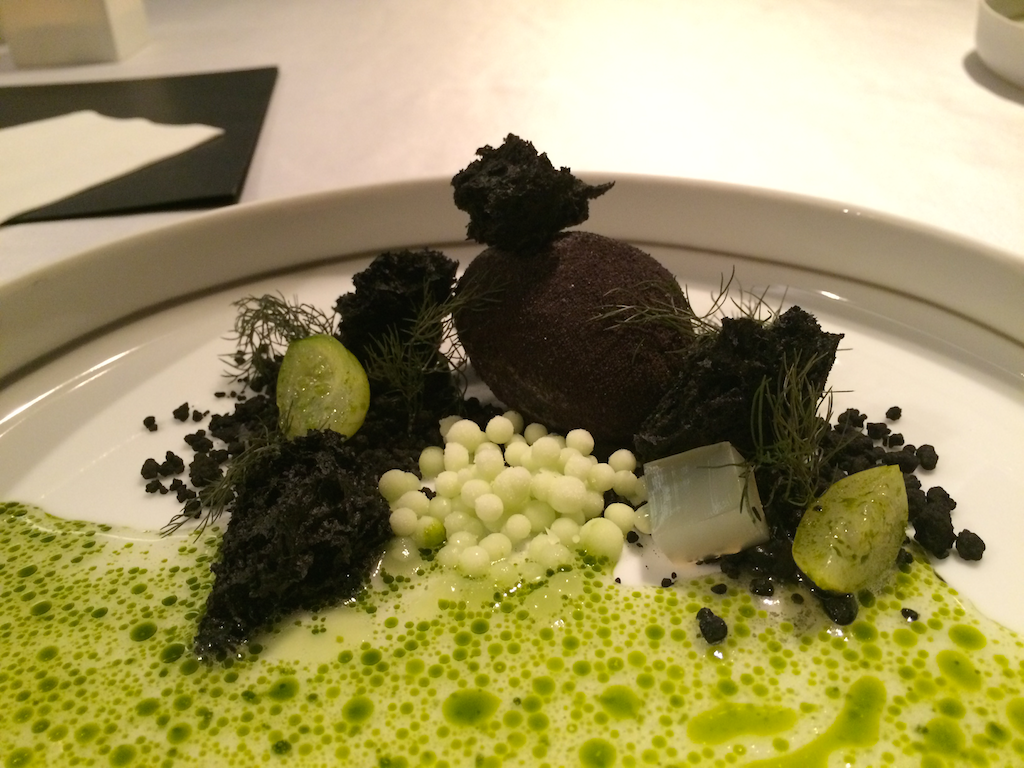
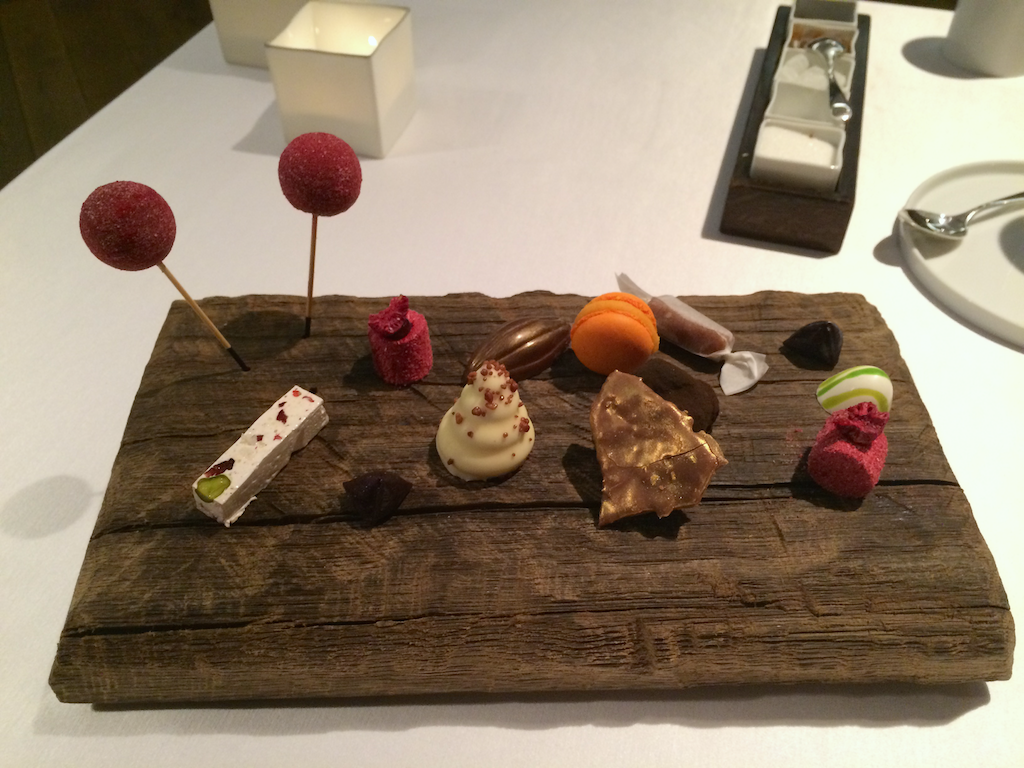
A lovely selection of sweets served with our coffees.
Where many Austrian (fine dining) restaurants seem stuck between tradition and modernity, it's clear to see that Simon Taxacher has passionately adopted a modernist approach. On this evening I got to experience intelligently designed dishes with creative and often innovative flavour combinations. Taxacher has an idiosyncratic style of cooking that I found attractive overall, but occasionally I did feel that some of the dishes had a sense of over-eleboration and some were less fine-tuned than others. That said, I do applaud Simon Taxacher for swimming (for many years now) against the "Klassische Küche" stream, and for creating an excellent restaurant where you can enjoy contemporary food in an Austrian context.













